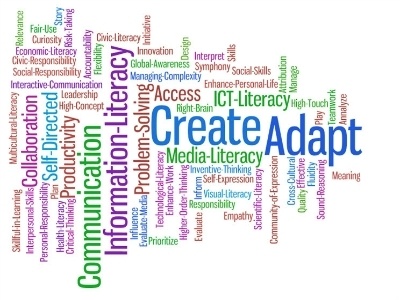Recent Learning Management System Trends Pointing Towards Continuing Increase Of LMS Popularity
A recent survey aimed at finding the top benefits and features that LMS users utilize. The results are overall positive, similar to the preceding years. What do organization stakeholders or decision makers say about the latest Learning Management System trends?
What Do The Decision Makers Say?
Since the stakeholders have the authority over the final word on every new system or technology implemented across the organization, it is important to first their feedback in consideration. For them the main aim is to ensure that the new system is aligned to the training objectives of the organization and is able to help the employees perform better. An overwhelming 96% of stakeholders say that their Learning Management System has had a "very, or somewhat positive" effect on both their ability to track the learner progress and the organization of their training content. A large majority also say that their system has had a positive impact on employee engagement, retention, and job performance.
Another decision that many stakeholders ponder over while implementing a Learning Management System is the deployment model that would suit the organization: Cloud-based, or On-premise. Both have their pros and cons, and the research shows that the choice is nearly split. 55% of the users say they use a cloud-based Learning Management System, while the remaining 45% use an on-premise system.
The biggest benefit of a cloud-based Learning Management System is that users can access the software through any compatible device that has an Internet connection. This provides the flexibility of learning, where the employee can choose to learn irrespective of the time or location at work, at home, while travelling or even at remote job locations especially when they need it the most. Another benefit is the avoidance of the tedium of hosting and maintaining the software as the LMS vendor takes care of updating and maintaining it. The organization need not have their own servers or IT team to bother with the Learning Management System.
However, on the hind side, many organizations —especially the ones with large number of learners and available IT resources— do not want their sensitive data residing on external servers. With their extended IT resources, they choose to invest in an on-premise Learning Management System. In addition to having more control and security of the platform, an on-premise Learning Management System also gives more room for customization, which is another benefit for larger organizations with specific learner needs.
Another Learning Management System trend is the training methodology adopted by the organization that reflects on how the Learning Management System is being utilized. Some prefer the self-paced training mode, while some want only instructor-led training done at a specific time. But most users, almost 68%, claim to take a blended approach which combines the benefits of both self-paced and instructor-led training. The benefits of instructor-led training are that trainees get individual attention, and that the instructor can answer questions and ensure that all the students understand the material. With student-led online courses, trainees can learn at the convenient place and time.
Blended learning combines the best of both worlds. Learning Management Systems can provide support for blended learning with the help of features that align well to instructor-led classroom training and self-paced learning. For instructor-led training, built-in calendar feature ensures both trainers and trainees know when courses will take place. In addition, the virtual classroom functionality allows employees across the globe to join an instructor-led training session through web-conference. In-class assessments can also be recorded, tracked, and reported on. For learners who are learning through self-paced e-courses, the LMS administrators can create online courses, control which trainees can access them, and set dates to complete them by. Learners can start and complete the courses at their own pace. Online assessments can be recorded, tracked, and reported on.
What Do The Learners Say?
While the popularity of mobile learning being on the rise, when asked what devices the learners choose to access the Learning Management System, the research revealed that 85% use a desktop computer, 70% use a laptop, and just 9% use a smartphone. This points to the persistent need to create learning content which is aligned to mobile devices. Many developers make e-courses mobile enabled to create the value of mobile learning, but that does not always encourage learners to access the courses on their hand-held devices. If the content is not viewed well on smartphones or tablets, the learners would prefer to take up the course on the desktop. In order to counter this problem, suitable fonts and image sizes can be chosen to create mobile learning content. In addition, latest technology, such as responsive web design, can be adopted to ensure that the learning content aligns to the viewing device.
When talking about the challenges of technology-aided learning, most learners share that complexity of the learning system is the biggest challenge that they face. In addition, technical issues or glitches are also a problem, but most learners find it easy to overcome these with the support available through online help desks manned by the personnel of the organization, or the LMS vendor.
In conclusion, it is evident that the benefits of Learning Management System implementation are clear to both stakeholders and the end-users. With the appropriate strategies, such as creating a learning strategy before implementing the Learning Management System, reviewing the LMS and conducting user demos with the target audience, organizational Learning Management Systems can be very successful in training the employees well and gaining the business advantage.
Source and suggested further read: Learning Management System User Report – 2016









